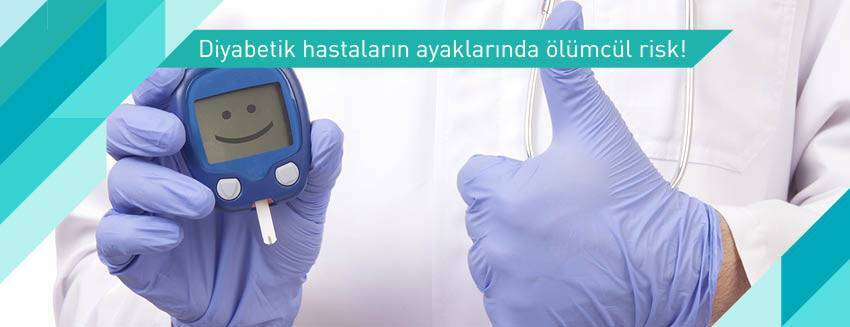- E-Magazine
Contents
Wounds that do not heal within 4-6 weeks despite treatment can lead to consequences up to the loss of the foot if left untreated. Experts emphasizing the importance of foot care in diabetic patients recommend keeping the sugar level under control, washing the feet with soapy water every day, and using soft shoes.
Üsküdar University NPISTANBUL Hospital Orthopedics and Traumatology Specialist Specialist. Dr. Abdullah Şarlak emphasized that the treatment of chronic foot wounds that occur in diabetic patients is important.
[news=karamuk-dikeni-diabetes-care-will-olacak-mi]
"Chronic wound is the name given to all wounds that heal late or with difficulty or do not heal," said Specialist. Dr. Abdullah Şarlak said, "If a wound does not heal within 4-6 weeks despite treatment, it takes this name. The underlying diseases are diabetes, vascular occlusion, bed pressure sores. Concomitant factors are obesity, smoking, general condition disorder, advanced age, cancer and some medications used. In addition, inappropriate footwear and foot deformity are increasing causes."
Even a small redness on the foot is very important!
Stating that a small redness and wound that starts in diabetic patients is very important, Uzm. Dr. Abdullah Şarlak said, "The treatment of the wound becomes more difficult as a result of infection settling in the area that does not heal due to insufficient nutrition of the tissue. In diabetic patients, the problem of wound healing increases as a result of deterioration of the leg nerves (neuropathy), blockage of the vessels and weakening of the defense system. In diabetic patients, even a small rash or a wound that starts is very important. It requires careful follow-up and treatment. Most patients in this condition develop chronic wounds on the feet. In half of the patients with chronic wounds, if adequate treatment is not performed, bad results up to amputation are seen."
Sugar should be kept under control
Uzm. Dr. Abdullah Şarlak also listed the precautions that diabetic patients should take to prevent the formation of chronic wounds as follows:
- They should keep their sugar under control.
2. Since these patients will lose their protective sense of feeling, they should carefully check their feet for wounds every day (with the help of a mirror and the help of their relatives)
Feet should be washed every day and dried with a white towel!
- Every day, feet should be washed with warm water and soap, dried with a soft white towel and treated with emollient cream. If the towel is white, a small bleeding will be noticed.
- Nails should be cut carefully and straight, rubberless cotton seamless socks should be changed daily.
Soft shoes should be worn
- Shoes should be soft, round and closed toe, non-squeezing. Flip-flops, high-heeled, narrow, open-front shoes should not be worn. Always wear socks (at least two shoes alternately).
- Calluses, ingrown toenails, fungal diseases should not be treated on their own, they should seek the help of a specialist physician.
- Absolutely should not walk barefoot. Avoid contact with heaters and hot water bags.
Long walking and sitting for a long time is unfavorable
- Feet should be elevated during prolonged sitting (every two to three hours), rest and exercise should be well balanced (long walking and long sitting times are not appropriate).
- Antibiotic creams should not be applied uncontrolled. Absolutely no closure should be made with plaster or band-aid."
Chronic wound treatment should be done in the hospital
Uzm. Prof. Dr. Abdullah Şarlak emphasized that these patients should be treated with a multidisciplinary approach when a wound occurs and pointed out that the treatment of progressive chronic wound patients is performed in hospital. Uzm. Dr. Abdullah Şarlak said, "In these chronic wound patients, first of all, sugar is corrected and wound treatment is performed. Antibiotics are started according to the culture result. In addition to daily dressing and debridement in wound care, additional treatments such as vacuum therapy and hyperbaric oxygen therapy are applied. The vascular structure of the patients should be investigated with necessary examinations such as USG, CT, angiography. Interventional radiologic procedures are performed in this regard. Vascular surgeon specialist intervenes if necessary. Afterwards, the wound under control is closed with grafts if necessary. There is a 75% risk of re-injury within 5 years. For this reason, it should be followed very closely."

